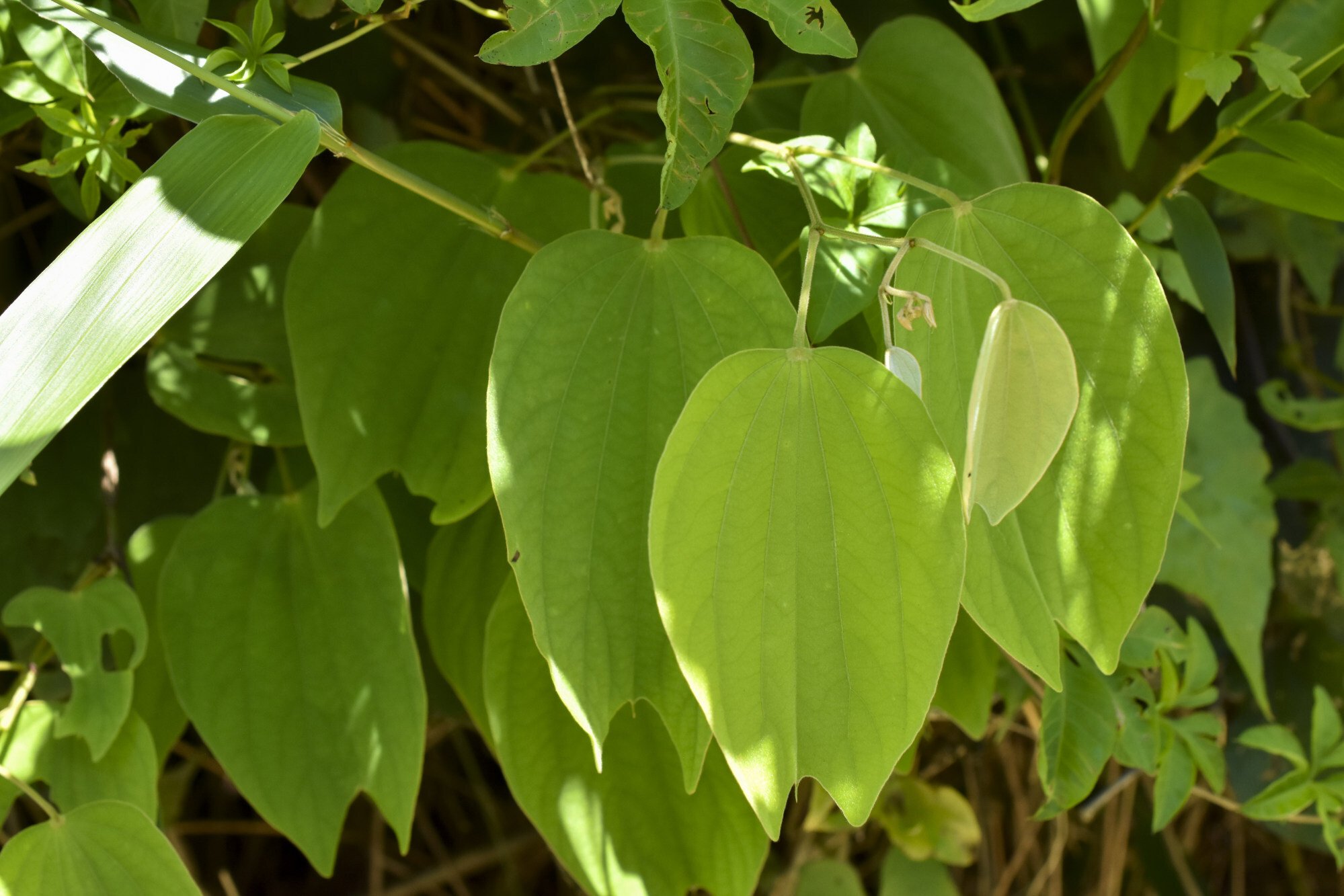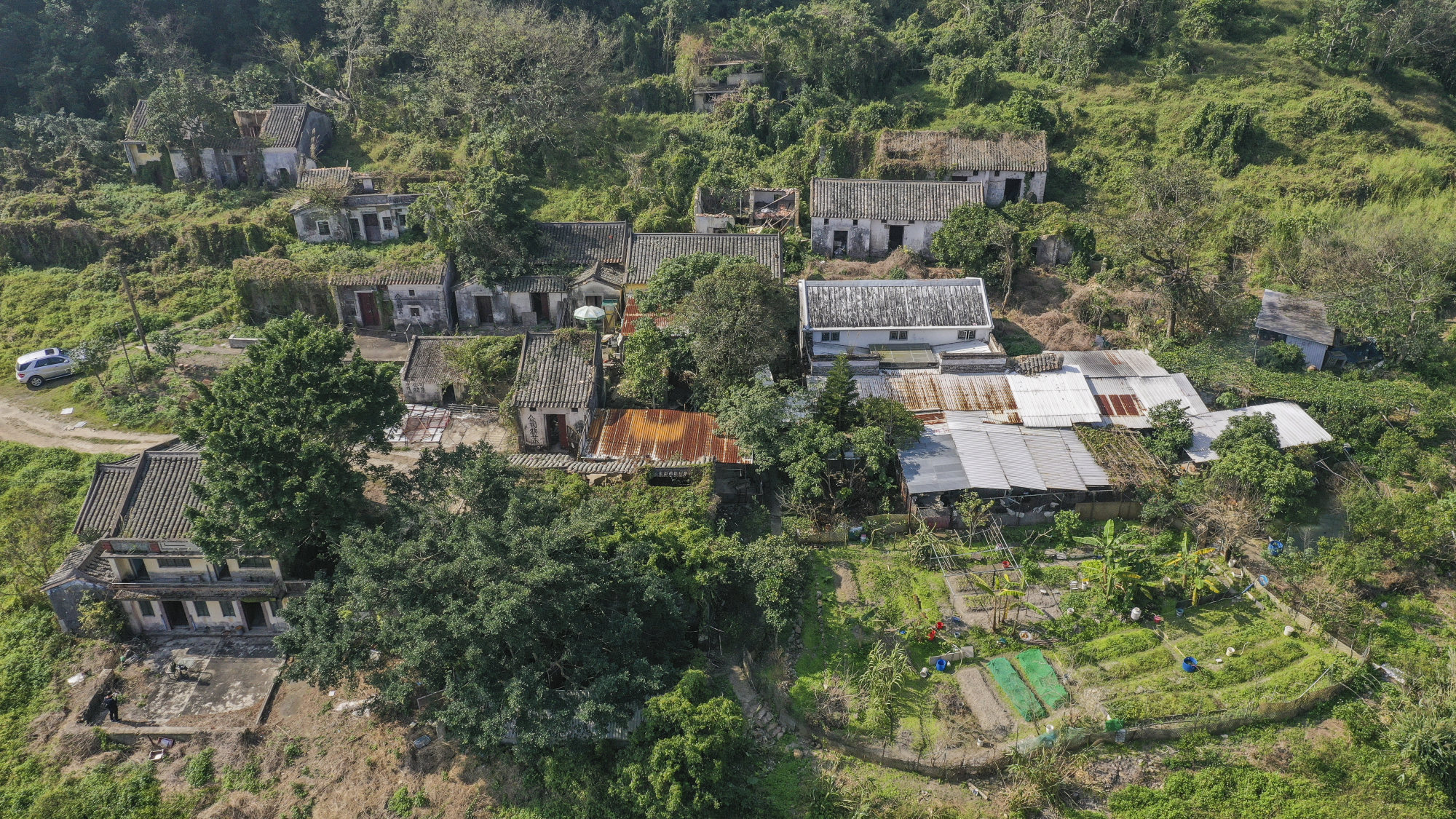
Hong Kong green group discovers bauhinia species not previously found in city
- Green Power noticed the Bauhinia aperilobata, of the same family as the city’s official flower, the Bauhinia blakeana, during a survey of Sha Lo Tung in Tai Po last June
- The plant, normally found in Fujian, Jiangxi, Guangdong and Guangxi provinces in southern China, is distinct from other bauhinia species seen in Hong Kong
A local green group has officially recorded a species of bauhinia not previously known to grow in Hong Kong, it has said.
Green Power first noticed the Bauhinia aperilobata, of the same family as the city’s official flower, the Bauhinia blakeana, during an ecological survey of Sha Lo Tung in Tai Po last June. The flowering plant is a vine, climbing around larger trees towards the canopy where there is more sunlight.
“The discovery of the Bauhinia aperilobata confirms Sha Lo Tung’s ecological value,” said Tommy Yu Kin-kong, Green Power’s assistant education and project manager.
“We believe there hasn’t been any official record of the plant before this, either because its distribution is not wide or they were possibly in places where people rarely go,” he said.
The group had waited until the plant flowered, before being able to fully confirm its exact species, Yu said.

The Bauhinia aperilobata, normally found in southern China throughout Fujian, Jiangxi, Guangdong and Guangxi provinces, was distinct from other bauhinia species seen in Hong Kong as it had a less obvious split section in its leaves, said Peggy Chung Chui-shan, Green Power’s education and project manager. Another characteristic is the light green colour of its petals.
Green Power’s ecological survey of Sha Lo Tung started in April 2018 as part of a deal with the government. Various rare plants and animals were earlier discovered during the survey. In 2019, the group found the Romer’s tree frog, an amphibian endemic only to Hong Kong that was once believed to be extinct. They also spotted crab-eating mongoose and Ryukyu Dusk-hawker dragonflies.
How the bauhinia flower became Hong Kong’s emblem
Sha Lo Tung was listed in 2004 as one of 12 priority sites to be protected under a new policy to regulate and conserve the city’s important natural resources.
Initially, the site was mostly private-owned and earmarked to be developed into a golf course, until the government proposed a land swap deal with the developer in 2017. The developer received a restored landfill site in Shuen Wan for its golf course, while the Sha Lo Tung area was put under an agreement between Green Power and the Agriculture, Fisheries and Conservation Department (AFCD) for rehabilitation.
The group completed a man-made marsh last November as part of its restoration efforts in the area. Since then, it had also discovered a type of fern, the Ceratopteris thalictroides, which was listed in the AFCD’s compendium “Rare and Precious Plants of Hong Kong”, Yu said.

Another rare plant recorded in the area after the restoration effort is the flowering Sphenoclea zeylanica, more commonly found around paddy fields and wetlands in Taiwan and southern China.
At the moment, the Bauhinia aperilobata has only been found in a four square metre area in Sha Lo Tung, and Yu said the group had not noticed it spreading beyond that, and were not too concerned it could be an invasive species.
“The ecological impact of this new plant is unlikely to be too big and there does not seem to be a risk it could spread too widely and suffocate other plants,” he said.
However, Dr Wu Jin, an assistant professor at the University of Hong Kong’s School of Biological Sciences, said the group should still try to find out how the plant spread to the city.
“We must identify whether it is an invasive species, which can be confirmed by finding out if it has existed previously in the city but was unrecorded, and whether it will cause any negative ecological impact,” Wu said.
Ten of Hong Kong’s most endangered species, from animals hunted for TCM to the gigantic Plantasaurus
“Even if it is a localised phenomenon now, it doesn’t mean it won’t appear in other places in the future, so we would also need to identify how the plant spread to Hong Kong,” he added.
The AFCD said it was not able to verify the identification of the new species as the relevant taxonomic publications and plant specimens were currently unavailable. But it said it would get in touch with Green Power for further verification.

